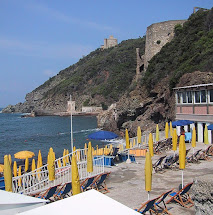Federico da Montefeltro – condottiero
Patron of the arts made money through war
Federico da Montefeltro, one of the most successful of the Italian condottieri, was born on this day in 1422 in Gubbio. He has been immortalised by the famous portrait painted of him by Piero della Francesca, where he was dressed in red and showing his formidable profile. Federico ruled Urbino from 1444 until his death, commissioning the building of a large library where he employed his own team of scribes to copy texts. He was the illegitimate son of Guidantonio da Montefeltro but he was legitimised by the Pope with the consent of Guidantonio’s wife. Federico began his career as a condottiero - a kind of mercenary military leader - at the age of 16. When his half-brother, who had recently become Duke of Urbino, was assassinated in 1444, Federico seized the city of Urbino. To bring in money he continued to wage war as a condottiero. He lost his right eye in an accident during a tournament and later commissioned a surgeon to remove the bridge of his nose to improve his field of vision and make him less vulnerable to assassination attempts. Subsequently, he refused to have his portrait painted in full face, hence he is depicted in profile by Piero della Francesca. Read more…
___________________________________
Gaetano Berenstadt – operatic castrato
Italian-born performer who specialised in roles created by Handel
Gaetano Berenstadt, an alto castrato who sang many roles in George Frideric Handel’s operas, was born on this day in 1687 in Florence. His parents were German and his father played the timpani - kettle drums - for the Grand Duke of Tuscany. Berenstadt was sent to be a pupil of Francesco Pistocchi, a singer, composer and librettist who founded a singing school in Bologna. After performing in Bologna and Naples, Berenstadt visited London where he performed the role of Argante in a revival of Handel’s Rinaldo. The composer created three new arias especially for Berenstadt’s voice. On a later visit to London, Berenstadt sang for the composers of the Royal Academy of Music. On this visit he created the roles of Tolomeo in Handel’s Giulio Cesare, the title role in Flavio, and the role of Adalberto in Ottone. Back in Italy, he sang music by Italian composers and in two new compositions by Johann Adolph Hasse. He usually took on the role of a villainous tyrant and, despite the quality of his voice, he never portrayed a female character. His final appearances on stage were in his native Florence. Read more…
_____________________________________
Pippo Baudo - TV presenter
Record-breaking host of Sanremo festival
The television presenter Pippo Baudo, who became one of the most recognisable personalities on Italian television in a broadcasting career spanning six decades, was born on this day in 1936 in Militello in Val di Catania, in Sicily. Baudo has presented numerous shows for the national broadcaster Rai and for private networks but is probably best known as the host of the annual Sanremo Music Festival and the presenter of the immensely popular Sunday afternoon magazine show Domenica In. He was the face of Sanremo a record 13 times between 1968 and 2008, eclipsing another much-loved TV host, Mike Bongiorno, who presented the prestigious song contest on 11 occasions. Baudo has anchored or co-hosted Domenica In for 11 seasons. His appearance in the 2016-17 edition of the show came 37 years after he presented the programme for the first time in 1979. His other major shows include Settevoci, Canzonissima, Fantastico, Serata d'onore and Novecento. Pippo - short for Giuseppe - is the son of a lawyer, whose father had ambitions for his son to follow a similar career path. Read more…
Booking.com

.jpg)
.jpg)
%20(2).jpg)



.jpg)
_2.95.jpg)


.JPG)
.jpg)


.jpg)